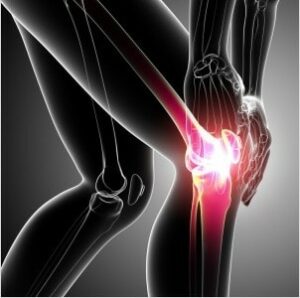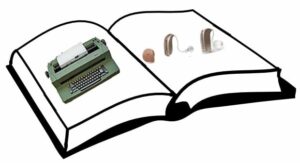
Prior to the holidays, this post offered a suggestion that a much larger market exists for amplification products (aka hearing aids) if they are viewed as a consumer product rather than as a product identified only with hearing loss. The number of “consumers” greatly exceeds the number of “patients” – normally, a critical factor in sales.
For those who wish to retain the patient/medical model of hearing aid dispensing, there is no reason to change. This model would most certainly be maintained by those operating in a medically-related or educational environment, as well as by a significant number of independent and manufacturer-employed dispensers. The medical model might even further differentiate audiologists who are truly involved in diagnostics, treatment, and extensive rehabilitation from those involved primarily in selling hearing aids. The “consumer” suggestion may not expand the market for medical-model dispensing facilities, but opening the market to a vast consumer base could allow the sellers of product to realize the market expansion many expressly desire. This, of course, would still depend on their ability to market product.
Hearable Listening/Communication Products
Listening products or systems that aid in communication are attractive to essentially the entire population, not just to those with hearing levels and designations that arbitrarily define communication interests. A restricted distribution may be less likely to expand when those selling have a vested interest in controlling the distribution. Additionally, the consumer’s hearing threshold levels may have little to do with their communication enhancement preferences. The statement in the box below is an attempt to offer an explanation.

Paraphrased from Staab, 1968{{1}}[[1]]Staab, W.J. (1968). Monaural vs. binaural hearing aid recommendations. North Dakota Hearing Aid Dealers, Bismarck, ND[[1]].
It would seem that a reasonable substitution could be to replace the word “hearing aid” with “listening product,” “amplification device,” or “hearable.” These are terms also that cover a wider range of communication interests other than a recognized and acceptable hearing loss. To expand upon the boxed statement above, a listening product’s acceptance of “hurt” may be much less than that required for hearing aids. Perhaps the term “hurt” could be replaced with something that denotes a listener’s “interest,” and thus, further widens the targeted market.
My Knee Hurts
An analogy to a painful knee might serve as an example. There are different degrees of pain and injury. One might do nothing but live with and accept the pain. Some might use ice to reduce swelling. Others might feel that the pain is not sufficient to warrant anything other than an over-the-counter pain reliever. One might purchase an elastic sleeve to support the knee for stability; others might purchase a knee brace; some will opt for exercise; still others for surgical treatment or even knee replacement.
Unless I’m wrong, it is the consumer who knows what discomfort he is experiencing and then makes the decision as to which way to proceed (self diagnosis or professional diagnosis), based on the degree of discomfort, or hurt. Consumers don’t have to be told that the knee hurts; they know what they are experiencing and manage it in a way acceptable to them – often without outside assistance and often with over-the-counter products. They may not function as well as they would with a fully functioning knee, but as long as their treatment meets their needs (financial, pain, or other), they have taken a plan of action acceptable to them. Most people act on their own, even when they make the decision for knee replacement.

What if the system for knee management was designed like that for the current medical model of hearing loss management? A person would have to schedule and pay for a knee evaluation, sign a waiver, purchase a product that sometimes seems to be forced on them to satisfy someone else’s need – all of this just to satisfy even the non-surgical treatment options. Fortunately, the medical model is not mandated in the case of knee pain, and, as a result, a lively market exists where individuals are able to purchase other products that satisfy their acceptance of knee pain care, and thus broaden the market. And, with these expanded offerings, medical knee physicians and/or specialists exist and conduct a thriving business.
This is perhaps a poor analogy, but it should help to illustrate the point. Some may argue that knee pain and hearing impairment aren’t the same thing – that the consequences are greater for the hearing loss. Explain that to the person having knee pain. Even if a hearing loss caused physical pain, might it follow the same scrutiny and action as taken for knee pain?
Where Does the Hearing Aid Industry Fit?
Will the rest of the world sit by idly as efforts are devoted to resurrecting the need for people to understand the necessity for good hearing, or are we polishing the brass balls on a sinking ship? Should we mourn the departed or dance on its grave? Perhaps an inquest is in order. Who or what killed the hearing aid? Was the death slow or sudden? Was it natural or violent? Was this the work of one culprit or many? Was the death a justifiable homicide or a cold-blooded murder{{2}}[[2]] modified from: https://www.nytimes.com/2014/09/14/magazine/the-death-of-adulthood-in-american-culture.html[[2]]? (Sorry, I sometimes get carried away).
Is the intent of this discussion to call for the end of audiologists and medical model hearing aid sales? No! The suggestion is that major market expansion could be expected if at least part of the market was redefined and reworded. Sell devices called something other than hearing aids! Work around the stigma. Have in your office a variety of listening systems. And by this, I am not referring to the traditional ALDs (assistive listening devices), although they have definite functions. (It is further interesting to note that ALDs are not called hearing aids, but focus on the real issue – listening)! Likewise, other amplification devices are not called hearing aids, but perform many of the same functions. Even the word “hearables” alone removes much of the stigma related to “hearing aid,” and suggests something other than some kind of age-related infirmity.
Is this just all a pipe dream, something that is unlikely to occur? Perhaps. But something different has to be attempted to move hearables use forward. If not by audiologists, then by whom? The opportunists are already front and center – what one might call the “elephant in the room.” Look at phones – any of them, smart or other, and see hearing aid-type functions; amplified ear buds carry sound to the ear; visualization with sound; alert signals, etc. Ear buds have used hearing aid-type features for many years, and developments into wireless communication with most personal electronic gadgets is a massive market essentially untapped by the hearing aid industry. These amplification systems are not used just by those with impaired hearing. The question is, can the hearing aid industry compete by requiring such products to be associated with a diagnosed hearing problem and reserved for “patients”?
The Typewriter And The Hearing Aid
 The typewriter had a specific purpose. The need for what it can do continues to this day, but one would be hard-pressed to find a typewriter in use anywhere. The term itself is seldom used, having been replaced with the computer and its keyboard, a device that has incorporated the specific purpose of the typewriter. Even computer keys have competitive use with many devices that deliver messages and information, often based on voice commands.
The typewriter had a specific purpose. The need for what it can do continues to this day, but one would be hard-pressed to find a typewriter in use anywhere. The term itself is seldom used, having been replaced with the computer and its keyboard, a device that has incorporated the specific purpose of the typewriter. Even computer keys have competitive use with many devices that deliver messages and information, often based on voice commands.
The traditional print media, a primary source for delivering information for a number of years, has effectively been replaced by the Internet, which can manage and present complete information much more rapidly and effectively. Are we to expect a resurrection of daily newspapers and magazines, or typewriters? Unlikely. Likewise, the hearing aid, as historically defined, had a specific purpose. That need continues to this day, but is being redefined. The redefinition can occur within the hearing aid industry, but may very likely come from without. Who controls this? Who is the elephant in the room? Do dispensers and manufacturers really have control of this? You be the judge.
 People have always had a fondness for things from the past: ’57 Chevys, pencils, wind-up clocks, kerosene lanterns, Beanie Babies, campaign pins, lunch boxes, post cards, old hearing aids, and, yes, even typewriters. With the death of the typewriter, an era ended. Could this occur also with the hearing aid, as it is currently perceived? My personal belief is that the “traditional” hearing aid with its historic presentation to consumers is nearing its end, to be replaced by hearable devices.
People have always had a fondness for things from the past: ’57 Chevys, pencils, wind-up clocks, kerosene lanterns, Beanie Babies, campaign pins, lunch boxes, post cards, old hearing aids, and, yes, even typewriters. With the death of the typewriter, an era ended. Could this occur also with the hearing aid, as it is currently perceived? My personal belief is that the “traditional” hearing aid with its historic presentation to consumers is nearing its end, to be replaced by hearable devices.
Will traditional hearing aid use expand? There is little evidence that numbers of units fitted in the future will advance significantly under the current medical model, even with significant financial and concentrated promotion. I own a white pickup. Even if I tell people that it is black in color, it doesn’t change the pickup color. I can try as hard as I want, even spend thousands of dollars to inform them that it is black, but all in vain. The current product (by definition and use) may be too limited to have any serious impact if the goal is to help as many people communicate, or listen as efficiently as possible (notice, I did not say “hear”). This is especially true if the continued purpose is solely to fit hearing losses. An amplification device to assist in aiding defective hearing defines the population too narrowly. Still, there will be a population of dispensers who will continue this route and will become even more specialized in managing those expecting and/or requiring individualized care. But, should all be treated the same?
To expand the use of amplification, a previous post suggested that potential purchasers be called customers, and allow them to operate in a consumer environment. Perhaps someone will run a survey asking non-hearing aid wearers if they would rather be called a consumer, patient, client, or undefined, rather than having a profession define them to fit the profession’s need.







Preaching to the choir, Rev Wayne! Tell the organist to pump it up… and thanks for your thoughtful sermons.